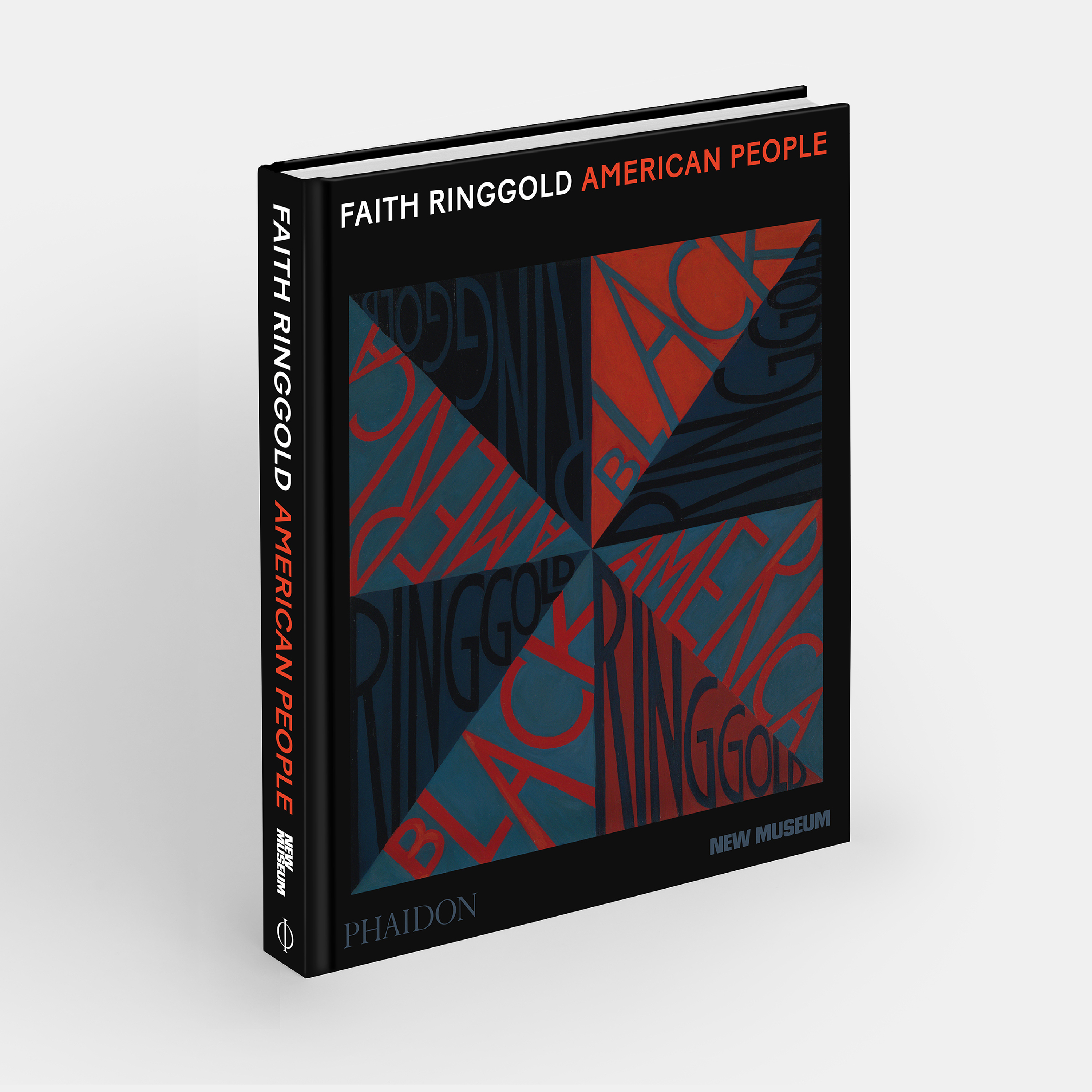
All you need to know about Faith Ringgold: American People
Our book with The New Museum is the most comprehensive survey to date of the artist, whose work and activism span close to six decades
In October 2019 New York’s Museum of Modern Art reopened after a major refurbishment and expansion. MoMA took the opportunity to rehang its collection, and in so doing, recontextualize its position within American culture. Writing in the New York Times, the paper’s art critic Holland Cotter praised MoMA’s rehang as enabling to the museum to finally “reveal itself to be a living, breathing 21st-century institution, rather than the monument to an obsolete history — white, male, and nationalist — that it has become over the years since its founding in 1929.”
The picture at the top of Cotter’s article illustrated his point perfectly; it showed the installation of Picasso’s 1907 masterpiece, Les Demoiselles d’Avignon, alongside an equally impressive work, American People Series #20: Die (1967) by Faith Ringgold.
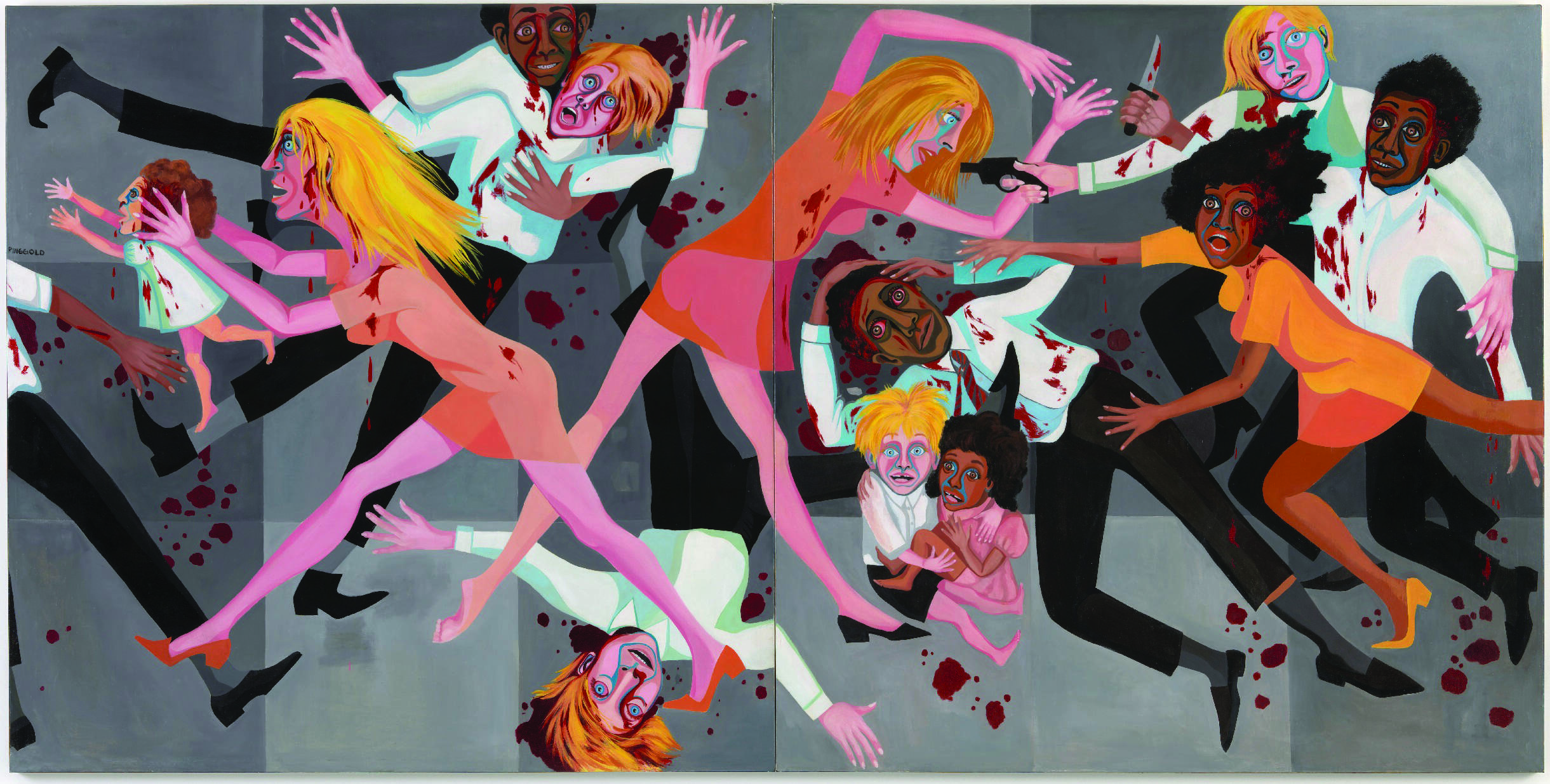
Faith Ringgold, American People Series #20: Die, 1967. Oil on canvas, two panels, 72 x 144 in (182.9 x 365.8 cm). The Museum of Modern Art, New York, Purchase; and gift of The Modern Women's Fund. © Faith Ringgold / ARS, NY and DACS, London, courtesy ACA Galleries, New York 2021. Digital Image © The Museum of Modern Art/Licensed by SCALA / Art Resource, NY
In hanging Die beside Les Demoiselles d’Avignon, MoMA acknowledged the undeniable importance of Ringgold, as an artist, author, educator, and activist, whose work serves as a link between the Harlem Renaissance of the early 20th century, the political foment of mid-century politics, and the work of young black artists practicing today.
This summer, The New Museum in New York will both deepen and widen our understanding and appreciation of this artist, when it stages Faith Ringgold: American People, the most comprehensive assessment to date of Ringgold’s art. The exhibition, and accompanying Phaidon catalogue, will feature the artist’s work from the 1960s when, in combining her inimitable style of figure painting with the semiotics of the protest, she made some of the most powerful art of the Civil Rights era. Yet the show and book, Faith Ringgold: American People (which takes its title from the artist’s 1963 series, American People), also surveys her earlier work, and the wide variety of art she produced during later decades, when Ringgold questioned the received hierarchies of art and craft through her experimental quilt paintings, while also reimagining art history, to produce narratives that bear witness to the historical sacrifices and achievements of Black Americans.
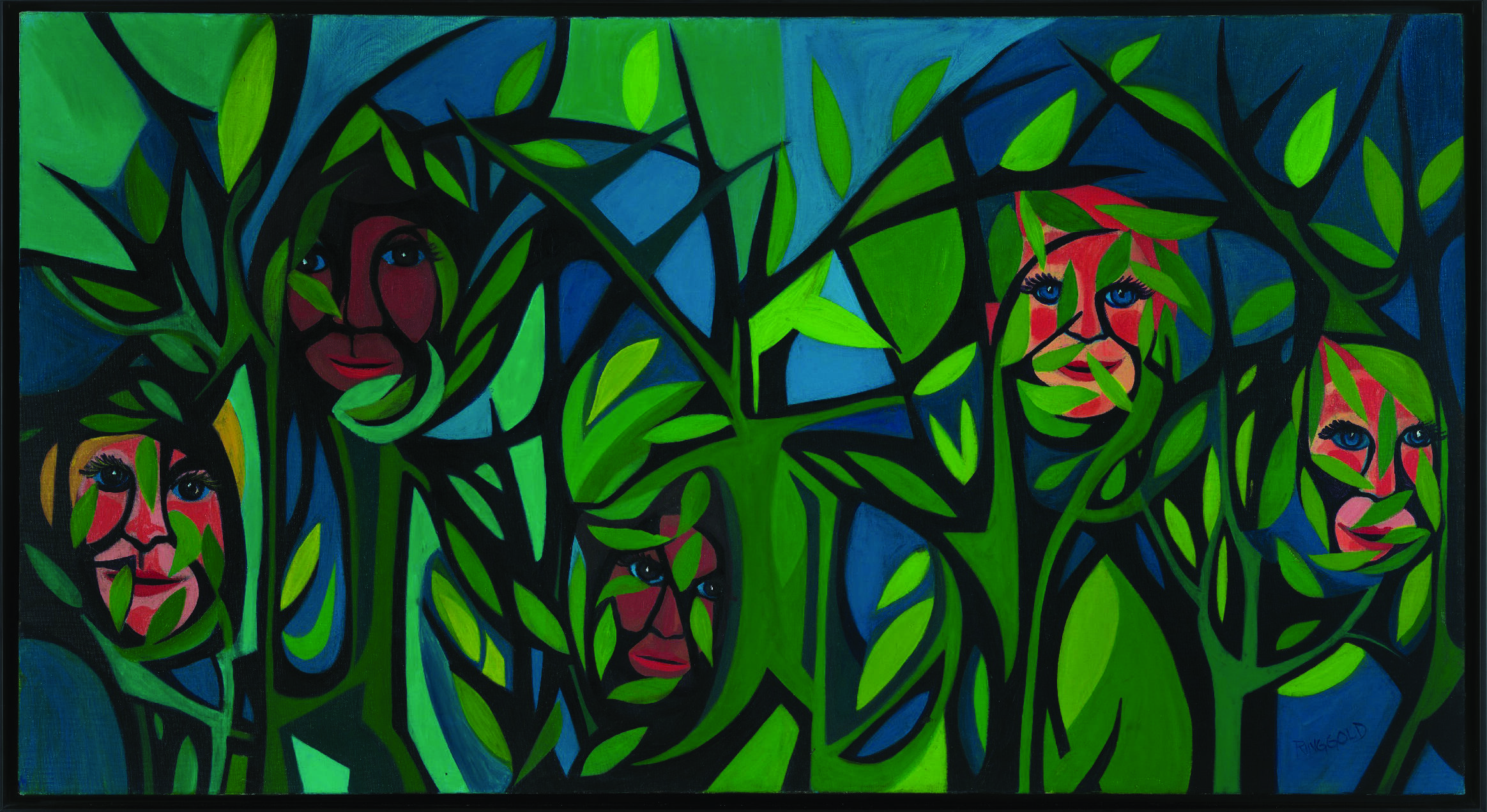
Faith Ringgold, American People Series #15: Hide Little Children, 1966. Oil on canvas, 26 x 48 in (66 x 121.9 cm). Private collection. © Faith Ringgold / ARS, NY and DACS, London, courtesy ACA Galleries, New York 2021. Photo: Todd-White Art Photography, London; courtesy Pippy Houldsworth Gallery, London
Born in 1930 at Harlem Hospital in New York, Ringgold's cultural life was enriched by the legacy of the Harlem Renaissance, that early 20th century flowering of African-American literature, music, art, fashion, theatre and politics. She travelled to Europe in the 1960s, and began to establish herself as a painter with a series of solo exhibitions at the Spectrum cooperative gallery in Manhattan. Later that decade her large, hard-hitting paintings, dubbed ‘murals’ by Ringgold despite being works on canvas, expressed the social discord of the era, while also engaging with and challenging the artistic cliques and movements of the age. “Ringgold felt that the long-term impact of her murals was in part dependent on their ability to stand together with the works of Pollock, Picasso, Reinhardt, Katz, Johns, and Warhol in the institutions in which they are housed,” writes the British curator Mark Godfrey in our new book. “Other Black artists made other choices. Ringgold believed that by working with and against the canon, she could rebuild it and create a new audience at the same time.”
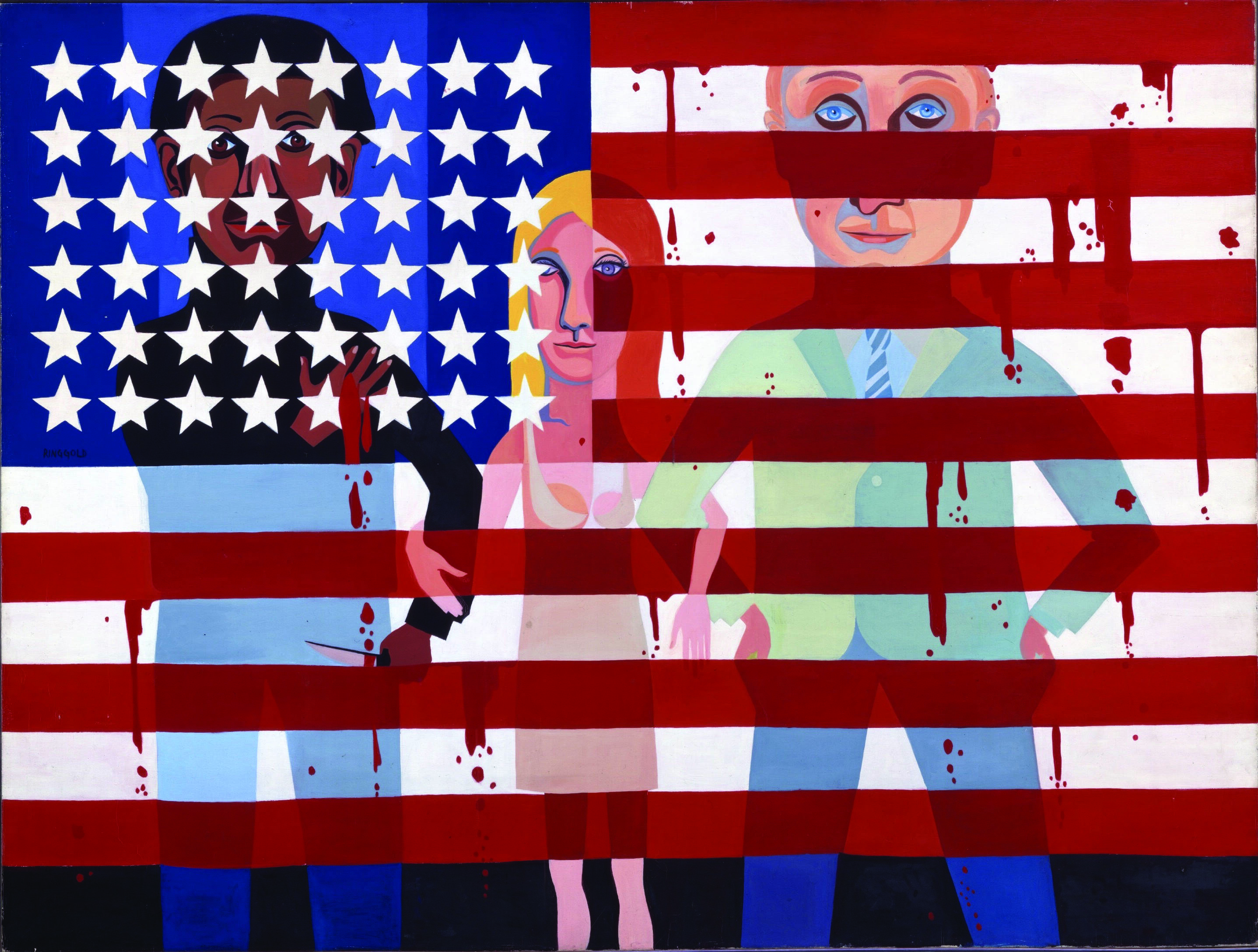
Faith Ringgold, American People Series #18: The Flag Is Bleeding, 1967. Oil on canvas, 72 x 96 in (182.9 x 243.8 cm). Courtesy the artist and ACA Galleries, New York. © Faith Ringgold / ARS, NY and DACS, London, courtesy ACA Galleries, New York 2021
During the 1970s she engaged with that audience in a different way when she began to make textile tankas, inspired by the traditional Tibetan art form of paintings framed in richly brocaded fabrics, as well as soft sculptures and masks. In 1980, she debuted her first quilt, Echoes of Harlem, created in conjunction with her mother. Later that same decade, Ringgold debuted her hybrid narrative ‘story quilt’ form, Who’s Afraid of Aunt Jemima? (1983).
“Using a checkerboard pattern to organize the story told in text and images, the artist describes a fully fleshed-out life and family of the titular businesswoman, Jemima Blakey,” writes the author and academic Julia Bryan-Wilson in our new book, “shifting the discourse away from perceiving the figure as a flat, denigrating stereotype and recasting her as a working mother.”
In the 1990s, Ringgold made her publishing debut with her award winning children’s book, Tar Beach, which received the Caldecott Honor and the Coretta Scott King award, and was developed into an HBO animation in 2010.
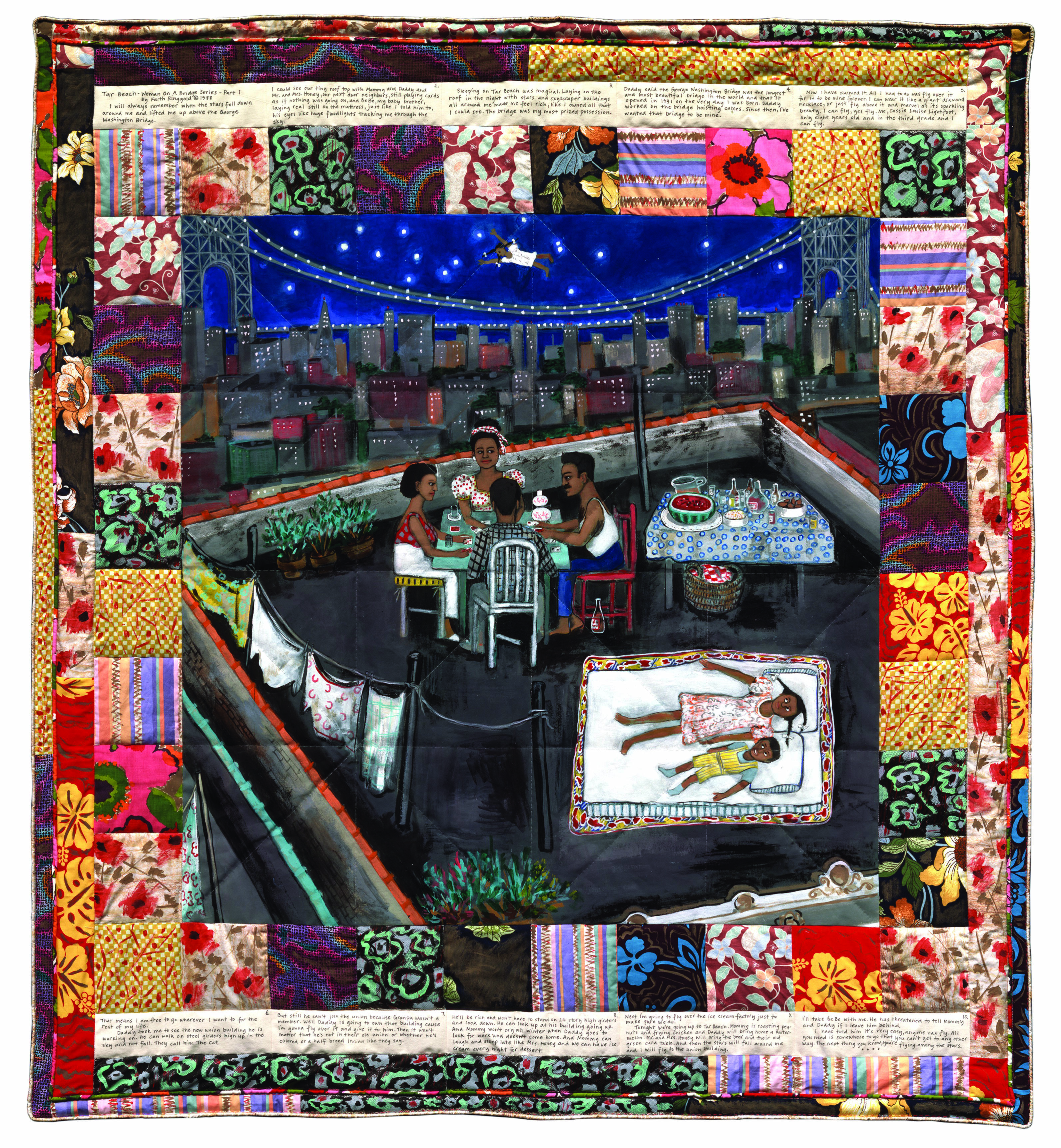
Faith Ringgold, Woman on a Bridge #1 of 5: Tar Beach, 1988. Acrylic on canvas with printed fabric, ink, and thread, 74 5/8 x 68 ½ in (189.5 x 174 cm). Solomon R. Guggenheim Museum, New York; Gift Mr. and Mrs. Gus and Judith Leiber, 1988. © Faith Ringgold / ARS, NY and DACS, London, courtesy ACA Galleries, New York 2021
While the New Museum brings together all these works, as well as earlier and later pieces, to present the first full retrospective of Ringgold’s work to be staged in New York, the accompanying catalogue represents the most significant collection of scholarship on Ringgold’s work to date, with new contributions by curators, writers, and artists across generations, including Diedrick Brackens, LeRonn Brooks, Jordan Casteel, Bridget Cooks, Mark Godfrey, Lucy Lippard, Tschabalala Self, Michele Wallace, and Zoé Whitley, among others.
Published in the spring of 2022, to coincide with the exhibition’s opening in February 2022, Faith Ringgold: American People is the most comprehensive survey to date of an artist whose groundbreaking art and activism spans five-plus decades, and now, rightly, stands shoulder to shoulder with modern and contemporary greats. To find out more and order your copy go here.
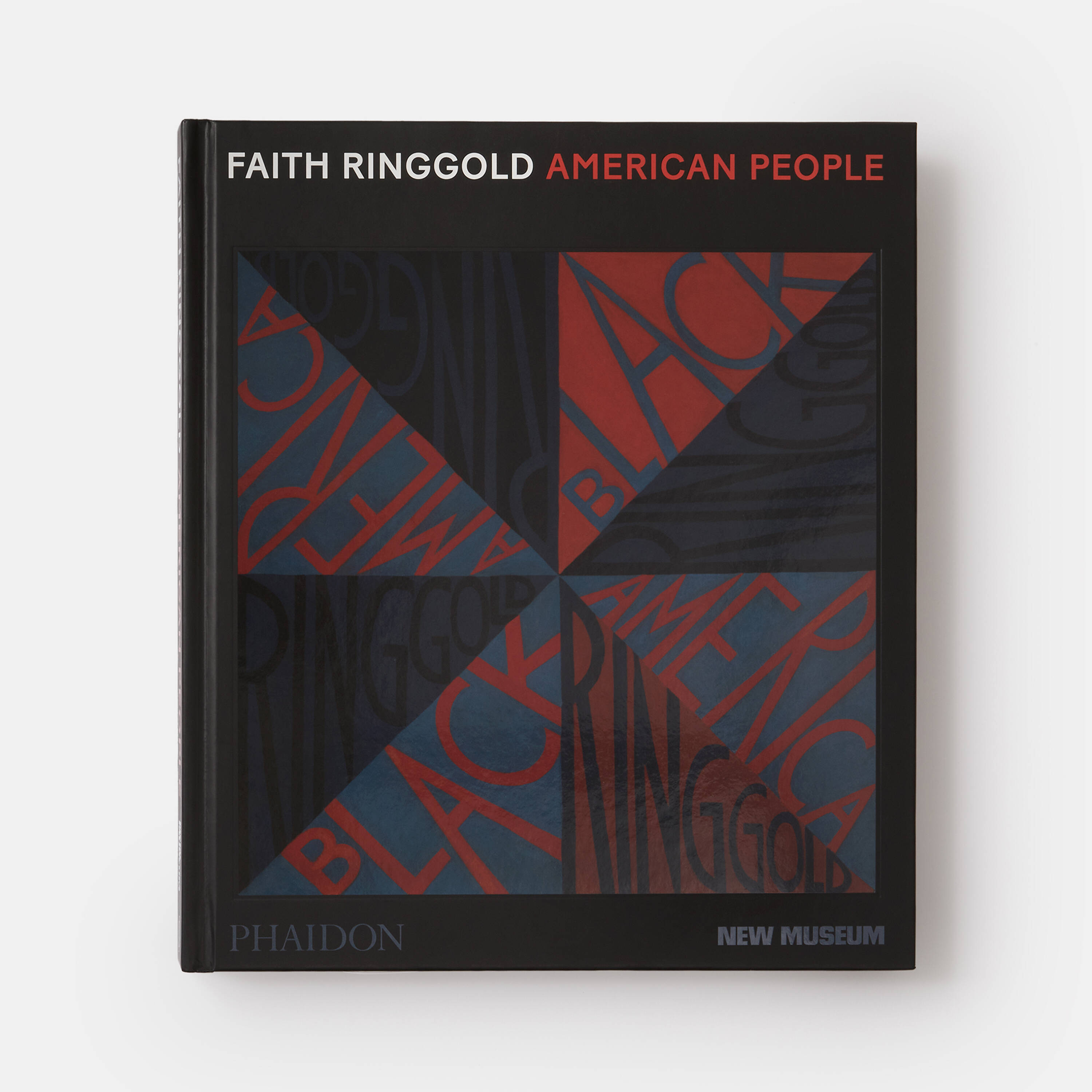
Faith Ringgold: American People